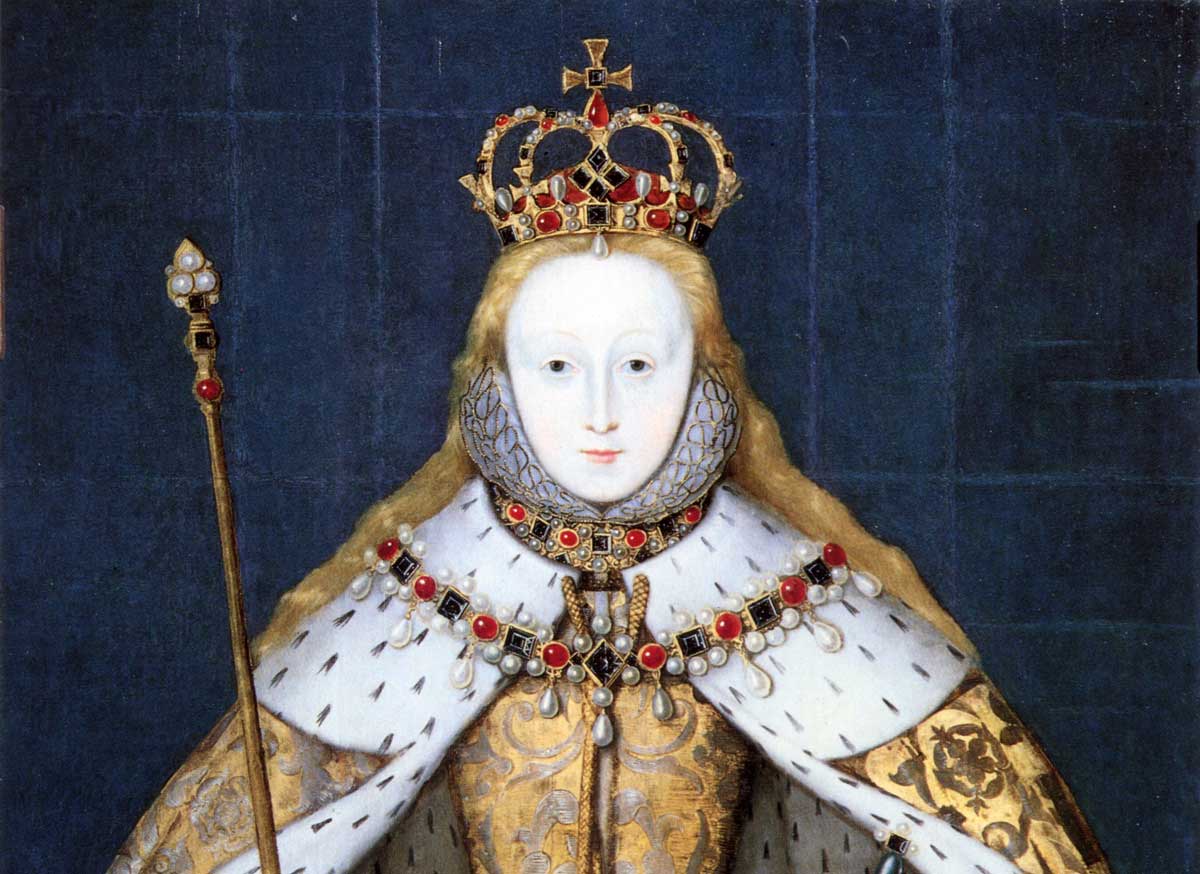The Accession of Elizabeth I
One of the greatest and most fascinating of English monarchs was proclaimed queen on 17 November 1558.

Elizabeth Tudor, one of the greatest and most fascinating of English monarchs, was the daughter of Henry VIII and admiring contemporaries thought her a chip off the old block. Her mother was Anne Boleyn. Her elder half-sister Mary, daughter of Catherine of Aragon, was brought up as a Catholic, Elizabeth as a Protestant. By the November of 1558, when the last of close to 300 Protestants were burned alive as heretics, Queen Mary I, after five years on the throne, was childless, prematurely old at forty-two and seriously ill. She clearly had little time left and her husband, Philip II of Spain, sent a message urging her to make sure that Elizabeth would succeed her (which he believed would best suit Spain's interests). He also sent an envoy, who visited the Lady Elizabeth. Now twenty-five, she was living at Hatfield Palace in Hertfordshire and keeping quiet while important people deluged her with private messages of support. When the Spanish envoy told her that it was his master who would make her queen, she told him he was talking nonsense and she would owe the throne to the people of England. He went away discomforted.
Mary accepted that Elizabeth must succeed her. She died at St James's Palace in London at six in the grey morning of the November 17th. Parliament was assembled by eight o'clock and the Commons joined the Lords to agree that the Lady Elizabeth must be proclaimed Mary's successor immediately. The Lady Elizabeth's closest adviser, Sir William Cecil, just fortunately happened to have a copy of the correct wording on him and the new queen was duly proclaimed. One of her first actions was to make Cecil her principal minister, which he would be for the next forty years.
On the 23rd, Elizabeth moved from Hatfield to London, which was seething with excitement. She stayed for five days at the Charterhouse, the former monastery. The new queen was a master of public relations and she endeared herself to her people with spectacular processions and brilliantly orchestrated events. Splendidly dressed in purple velvet, she rode in procession on the 28th through crowded streets from the Charterhouse to the Tower of London. She had once been a prisoner there, but now children recited speeches to her at points along the route and there was much joyful music and firing off of guns. Mary's embalmed body, costumed as a nun at her own command, was buried in Westminster Abbey on December 14th.
Elizabeth moved to Whitehall Palace on the 23rd and back to the Tower by water on January 12th in a display which an Italian onlooker compared favourably to the annual occasion in Venice when the city wed the sea. The climax of showmanship came with her procession from the Tower to Westminster on the 14th, escorted by a thousand riders on horseback through occasional snow flurries. Magnificently robed in cloth of gold, she was carried slowly along in an open litter, so that the cheering crowds could see her. Two mules in gold brocade bore the litter and in the procession marched the gentlemen pensioners in crimson damask carrying gilt battle-axes and an army of footmen in crimson jerkins adorned with a white and a red rose and the letters E.R. The streets themselves were lined with wooden rails draped in tapestries and silks and the City companies turned out in their liveries to applaud the new queen on her way. At intervals along the route through the City there were pageants and music, and recitations by children. Thousands of people had waited patiently for hours behind the barriers to see the show and banners saluted Elizabeth from windows along the way. The procession took the entire afternoon as she stopped the litter frequently for people in the crowd who wanted to speak to her or gjve her nosegays. She was crowned in Westminster Abbey the next day and when she was formally presented to her people there was such a huge shout and noise of trumpets, fifes, drums and ringing of bells that an observer said it was as if the world had come to an end. The ceremony was followed by the customary feast in Westminster Hall, where the monarch, in full majesty with her sceptre and orb smiled rapturously on all beholders. Elizabeth had already begun to make herself the sun around which her country revolved. Even the grumpy Spanish envoy admitted that she 'gives her orders and has her way as absolutely as her father did'. It was under her that England would emerge as a world power.